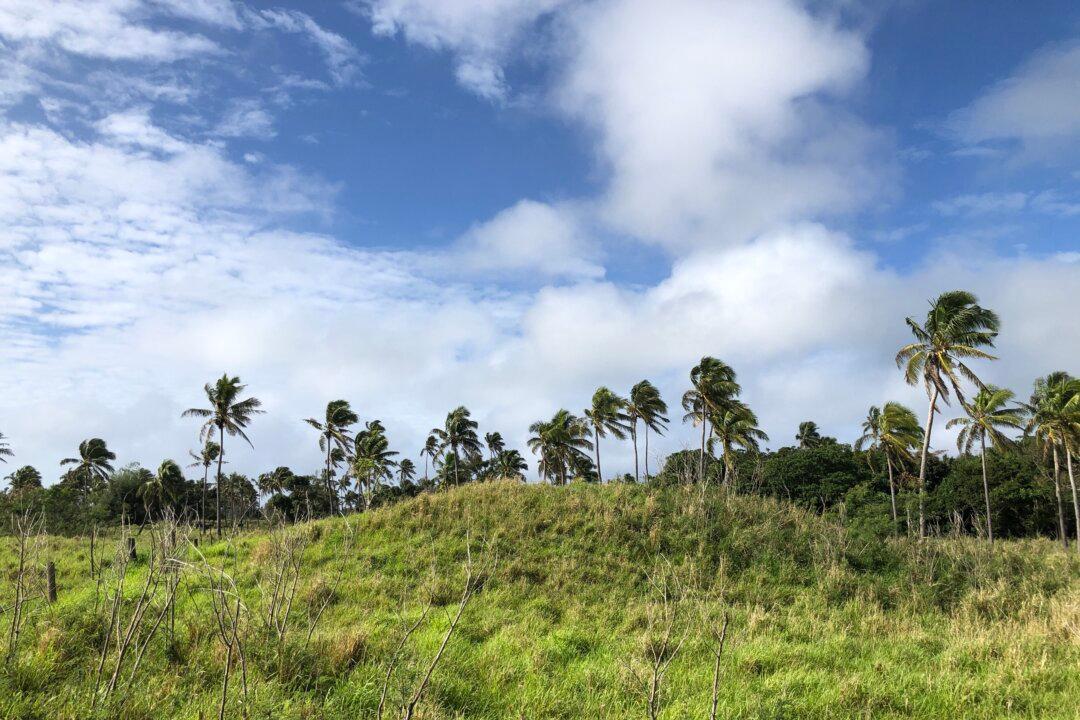Archeologists from Australia have made a remarkable discovery of a previously unknown ancient city in the Kingdom of Tonga, which challenges the historical narrative surrounding settlement in the Pacific Islands.
Australian National University study author Phillip Parton, along with archaeologist Geoffrey Clark, estimated the “earth structures” were built in Tongatapu—the largest island in the country—around 300 AD.
“This is 700 years earlier than previously thought,” Mr. Parton said.
Located 7.5 kilometres from Tonga’s capital Nukuálofa in a village called Mu'a, almost 10,000 earth-covered mounds can be found, suggesting urbanisation and the existence of a city well before the arrival of Dutch explorers in 1616 whom Abel Tasman followed.
The city is easily the oldest discovered to date throughout the South Pacific, with the archeologists saying between 6,700 and 7,600 people lived at the site, which was spread out over 1,170 hectares.
The mounds, also seen as evidence of ancient cultures across the world, were traditionally built when access to stone quarries was unavailable, and instead, residents relied on soil for construction.
The city would have had open-sided houses built on top of mounds possibly to escape the heat, while providing exposure to cool sea breezes and a vantage point of approaching people.
Early Settlement in Tonga
The dates of the initial settlement of Tonga are contentious, but radiocarbon dating of a shell has suggested the original inhabitants to be the Lapita, who arrived from Melanesia over 4,000 years ago.Previous archaeological research in Tongatapu has uncovered other evidence of early settlement, complex social structures, and long-distance trade networks, providing valuable insights into the history of the Pacific Islands.
Mu‘a was the centre of the Tu’i Tonga dynasty, which ruled over much of Tonga from around 950 AD to 1470 AD.
Excavations in the 1980s uncovered monumental stone structures known as langi, as well as royal tombs and other ceremonial constructions. These archaeological remains suggest a highly organised and hierarchical society, with strong religious and political institutions.
Another important archaeological site in Tonga is the Ha‘amonga ’a Maui Trilithon, also located on Tongatapu.
This impressive stone structure consists of three upright stones supporting a horizontal lintel, similar to the stone monuments found in other parts of the Pacific Islands. The exact purpose of the Ha‘amonga ’a Maui Trilithon is not known, but it is believed to have had astronomical significance.

In the latest find, researchers used laser technology, known as LIDAR, to see beneath the ground and discover an intricate lattice of mounds, along with communal structures and fortifications, similar to other ancient settlements found around the world.
“We were able to combine high-tech mapping and archaeological fieldwork to understand what was happening in Tongatapu,” Mr. Parton told the ABC, adding “Having this type of information really adds to our understanding of early Pacific societies.”
The Lost Art of Pigeon Snaring
The LIDAR also found evidence of large soil mounds called sia heu lupe that were constructed for the sport of pigeon snaring.“As settlements grew, they had to come up with new ways of supporting that growing population. This kind of setup—what we call low-density urbanisation—sets in motion huge social and economic change,” Mr. Parton said.
The characteristic feature of the pigeon mounds was a circular central pit, 5—7 metres in diameter, that have stone-faced walls.
The sport was described by Englishman William Mariner who said it involved tying a tame pigeon with string and then releasing it into the air. This in turn, would attract other pigeons that were also snared in the nets.
Arrival of Europeans
Mr. Parton said the city was likely a thriving centre of Polynesian trade, but could have declined after the arrival of Europeans.“The city’s influence eventually spread across the southwest Pacific Ocean between the13th and 19th centuries, until it collapsed with the arrival of Europeans and unknown diseases,” Mr. Parton said.
“I’m sure that should my colleagues choose to pursue that, this won’t be the only example of a city to be found in the Pacific. I’m sure there’s plenty waiting for us. This is just the beginning in terms of early Pacific settlements,” he told the ABC.








